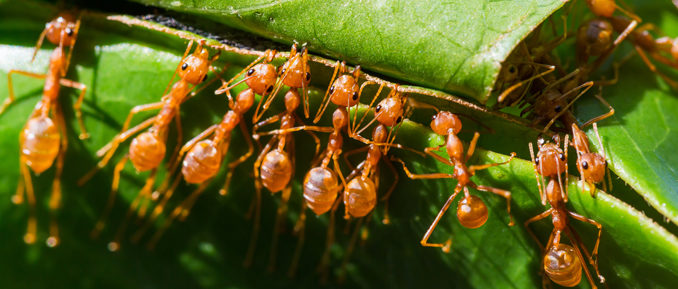
Social and environmental cues continue to shape our identities well into adulthood, including how we interact with each other socially. But what specific molecular mechanisms are at play here, that allow for this extended plasticity, and—providing a more immediate challenge—how do we study them?
In a study out of the University of Pennsylvania, a group of researchers led by esteemed epigeneticist Dr. Shelley Berger wanted to dive into determining the role that epigenetics plays in social behavior.
“How behavior becomes established in humans is deeply fascinating—we know it’s quite plastic especially during childhood and early adolescence—however, of course, we cannot study or manipulate this experimentally,” notes Dr. Berger, Professor of Cell & Development Biology at the UPenn Perelman School of Medicine, and the director of the Penn Epigenetics Institute. “Ants, with their complex societies and behavior, and similar plasticity, provide a wonderful laboratory model to understand the underlying mechanisms and pathways.”
What makes ants so great to study when trying to understand social behavior? Ant colonies are comprised of thousands of individuals with identical genetic makeup—yet each individual follows their exact role within the greater colony, and adheres to that role using very specific behaviors and leveraging particular physical traits. The queen, larger-sized Major workers, and smaller-sized Minor workers all coexist in harmony within the colony and operate like a well-oiled machine.
Over the past twelve years, Dr. Berger and her research team have studied the factors determining this caste placement; specifically, how individual carpenter ants are programmed to know their role within the colony.
A previous 2015 study by Berger’s group demonstrated that caste behavior in Major workers could be directly changed by injecting them with a chemical that can alter HDAC and HAT—two histone modifications that can affect gene expression.
Histones are the proteins around which DNA is coiled; modifying them usually involves adding or subtracting functional groups that change the coiling of the DNA, and therefore affects how ‘accessible’ DNA is to the rest of the cell— including the transcriptional machinery needed to turn its messages into action.
None of the ants’ physical traits changed, but their behavior did as Major workers shifted from their traditional role of colony defense to the Minor worker role of foraging for food.
The fact that injecting ants with a chemical known to modify histones changed their behavior indicates an epigenetic switch—affecting genetic expression without modifying the genetic sequence itself—on behavior. This chemical was used again in the latest study by Berger and her team. Trichostatin A (TSA), a histone deacetylase inhibitor, was injected into the brains of Major worker ants at three specific time points in adulthood. What they saw was that these ants were reprogrammed, with Minor worker genes being turned on and staying turned on well past TSA’s half-life; the switch that they discovered has a lasting impact.
Berger and her team also found that the protein CoRest showed different expression levels in reprogrammed ants. When Major workers became Minor workers through the TSA-induced histone modifications, CoRest was upregulated. This led to less degradation of Juvenile Hormone (JH); JH is usually degraded in Major workers and elevated in Minor workers, and so this change only further reinforced the ants’ behavioral switch to being cast as Minor workers within the colony.
Although this is a huge step forward in understanding how epigenetic changes can potentially affect behavior—and the first study to map out a mechanism of behavioral modification from epigenome all the way through signaling over to behavioral differences—further study is needed.
Researchers need to dig deeper to understand the specific molecular pathways responsible for all of the behavioral differences between the ant classes, and even how these might relate to human behavioral differences. Another critical consideration is the need to understand how long the epigenetic window of behavioral plasticity remains open, as well as how it evolves over the course of an organism’s lifespan.
Source: Glastad, Karl M., et al. “Epigenetic Regulator CoREST Controls Social Behavior in Ants.” Molecular Cell
Reference: Penn Medicine News Releases. Penn Team Discovers Epigenetic Pathway that Controls Social Behavior in Carpenter Ants. University of Pennsylvania Health System. 12 Nov. 2019. Web.

